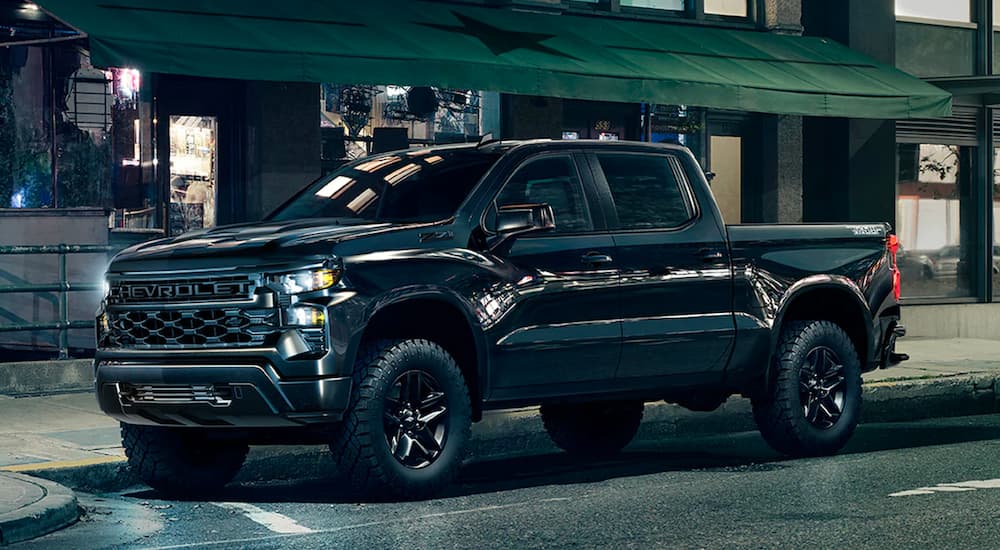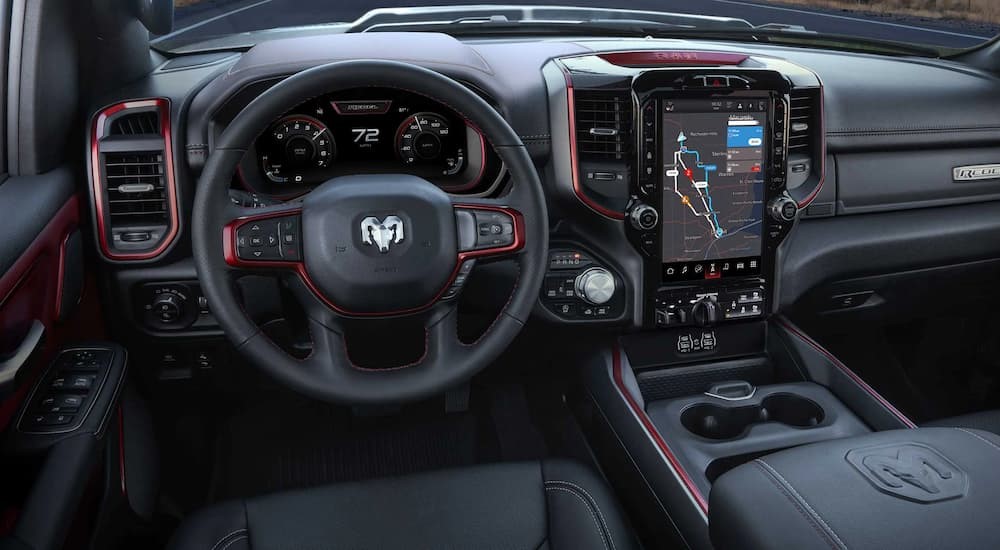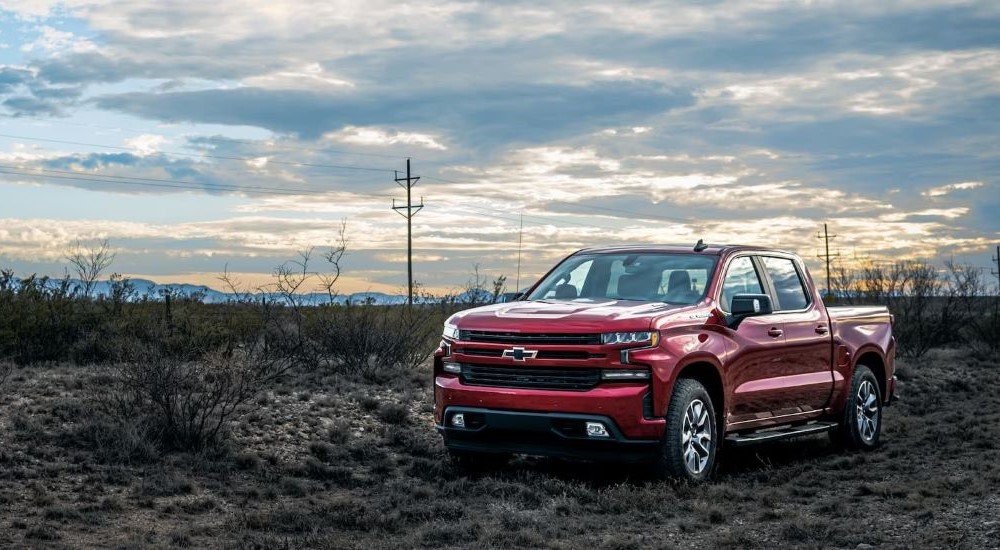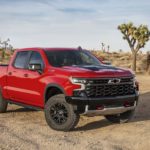We’re living in a world that’s becoming more automated by the second. You can speak to a tiny robot in your living room and ask it to order you more wet wipes or peanut butter, and she does. You can schedule social media posts ahead of time and even vacuum your home without actually laying a hand on your vacuum cleaner. Hey, you can even ask artificial intelligence to write blog posts like these (but they aren’t as accurate or entertaining as human-made ones). Consumers are becoming accustomed to devices and machinery that mostly operate themselves, and that goes for vehicles, too.
If you have been considering the 2023 Chevy Silverado 1500 vs 2023 Ram 1500 and have already decided they’re both up to the challenge of your towing and hauling needs, it all might come down to the trucks’ more advanced features. More specifically, it might come down to their more futuristic feature––hands-free driving. Chevrolet and Ram––and more specifically, their parent companies GM and Stellantis––are at very different but interesting places in their hands-free driving technology journey. If this is the make or break feature for you, here’s what you should know about the hands-free driving systems currently offered and in development for both the Chevy Silverado 1500 and the Ram 1500.
Ram Has No Hands-Free Driving, For Now
At the moment, Ram doesn’t offer any hands-free driving technology in its vehicles. So if you get the 2023 Ram 1500, you will need to be fully in control of your vehicle at all times. Chevrolet, on the other hand, offers Super Cruise, which allows for hands-free driving on over 200,000 miles of compatible roads in the U.S. and Canada.
The words “for now” are pertinent, though. Stellantis––parent company to Ram––is currently developing what is referred to as a Level 3 autonomous driving system. So, what does that fancy terminology mean to you? Well, Chevy’s Super Cruise is not at Level 3. It will require you to be alert and take over in a number of situations that the Ram’s eventual/supposed system won’t. We’re going to break down exactly how Chevy’s Super Cruise, Stellantis’ future system, and a new system arriving for Chevy––Ultra Cruise––all operate below.
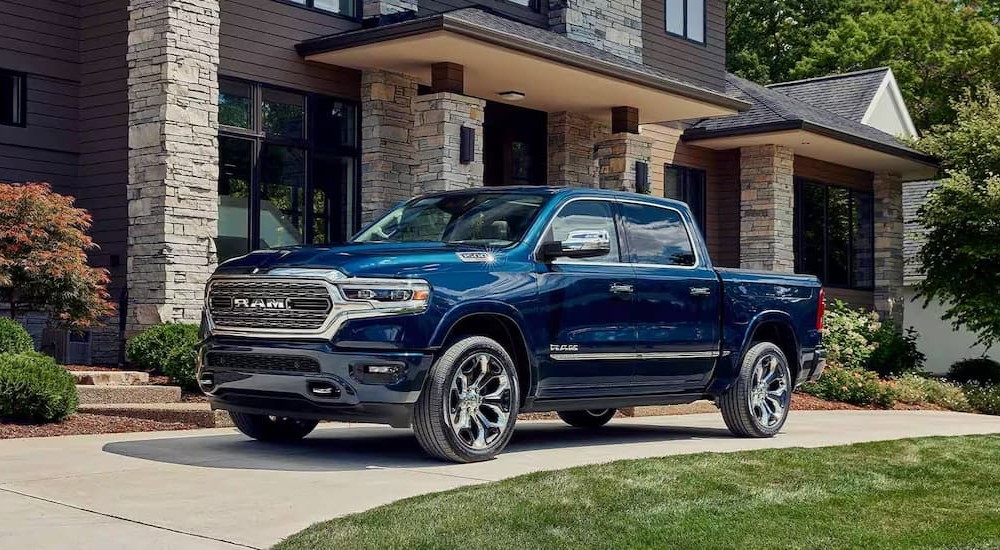
How Super Cruise Works
Super Cruise uses a combination of cameras, sensors, and something called LiDAR to enable hands-free driving. LiDAR uses a combination of light detection and ranging (aka infrared light) to create a three-dimensional image of the vehicle’s environment. Using these tools, Super Cruise can sense the dividing lanes in the road, as well as detect when you’re veering out of them and gently steer you back into your lane. It can also work with your adaptive cruise control to remain at your desired speed––unless doing so would put you too close to the vehicles in front of you. It will prioritize keeping a safe distance over staying at your desired speed and will return to the set speed when it is safe to do so.
Chevrolet explains that, as for the 200,000 or so miles of compatible roads, these will typically be roads “separated from traffic going in the opposite direction.” In other words, mostly highways and freeways. The system also monitors your head and eye movements to make sure you are alert and will notify you if you need to re-engage.
So, What About Ultra Cruise?
We touched on something called Ultra Cruise in the beginning. Ultra Cruise sits essentially right between Chevy’s current Super Cruise system, and Ram’s soon-to-be Level 3 autonomous driving system. In fact, Ultra Cruise is known as a Level 2 autonomous driving system.
Ultra Cruise will allow for hands-free driving in roughly 95 percent of situations. This will include city and suburban streets––which expands beyond where Super Cruise can go. Ultra Cruise uses cameras, sensors, radar, and that all-exciting LiDAR we already mentioned. With these systems, it can do things like recognize and respond to lane markers, turn lane arrows, and general permanent traffic control markers.
Ultra Cruise can also follow your navigation route. So if you’ve got the Silverado’s navigation system directing you, Ultra Cruise will follow those instructions to get you where you’re going. It can recognize speed limit signs, follow the speed limit, keep the required distance between yourself and other vehicles, and handle lane changes. It can even avoid obstacles on the road and self-park in residential driveways.
Ultra Cruise, like Super Cruise, will monitor you, the driver, to make sure you remain alert. It requires you to keep your eyes on the road, and it will notify you if you need to take over, like in an emergency situation or when you’ve left a compatible area.
How Is Level 3 Autonomous Driving Different?
Level 3 autonomous driving––which is what will eventually be on the Ram 1500––is primarily different from Super Cruise and Ultra Cruise in one major way: it does not require you to keep your eyes on the road. That’s correct. You can take your eyes off the road with Level 3 autonomous driving. The vehicle is prepared to handle emergency situations and most aspects of driving. Of course, you must be prepared to take over driving if the car prompts you to.
This all sounds pretty cool, but, remember, Level 3 autonomous driving isn’t out yet. There are reports that Stellantis will release it in 2024, and even then, there is no official report on when it will be installed in Rams. So while Level 3 autonomous driving is technically “the best” system out there, it isn’t really out there yet.
What Automated Features Does the 2023 Ram 1500 Offer?
At the moment, the 2023 Ram 1500 offers adaptive cruise control. So, it can stick to your desired speed limit, as well as keep the required distance between yourself and other vehicles. That’s as advanced as “self-driving” will be in the truck, for now. You will need to keep your hands on the wheel, though, so this is not a hands-free system.
It also has parallel and perpendicular park assist, which will guide you into parallel and perpendicular parking spots, and will automatically steer when doing so. So there’s that, but those features are pretty standard across many 2023 vehicles today.
As for now, Ram is stuck in a weird spot. They are, in theory, the most advanced, compared to Chevy, because of their hands-free driving technology that’s on the way, but only in theory. In reality, they are behind Chevy because Chevy does, in fact, have hands-free technology available now, and Ram does not.
Exciting Things Are on the Way
If you are looking for hands-free driving technology for primarily freeway and highway environments, the 2023 Chevy Silverado 1500 has you covered. If you want more advanced hands-free technology, you’ll need to wait. Ultra Cruise is on its way. GM will allegedly be putting it in some of its models as early as 2024. If you want the most advanced hands-free driving technology, you’ll need to wait a little longer for Level 3 autonomous driving from Ram. However, the release date for both of these systems is not confirmed. At the moment, if you’re looking at the 2023 Chevy Silverado 1500 vs the 2023 Ram 1500, only the Silverado has hands-free driving technology.
